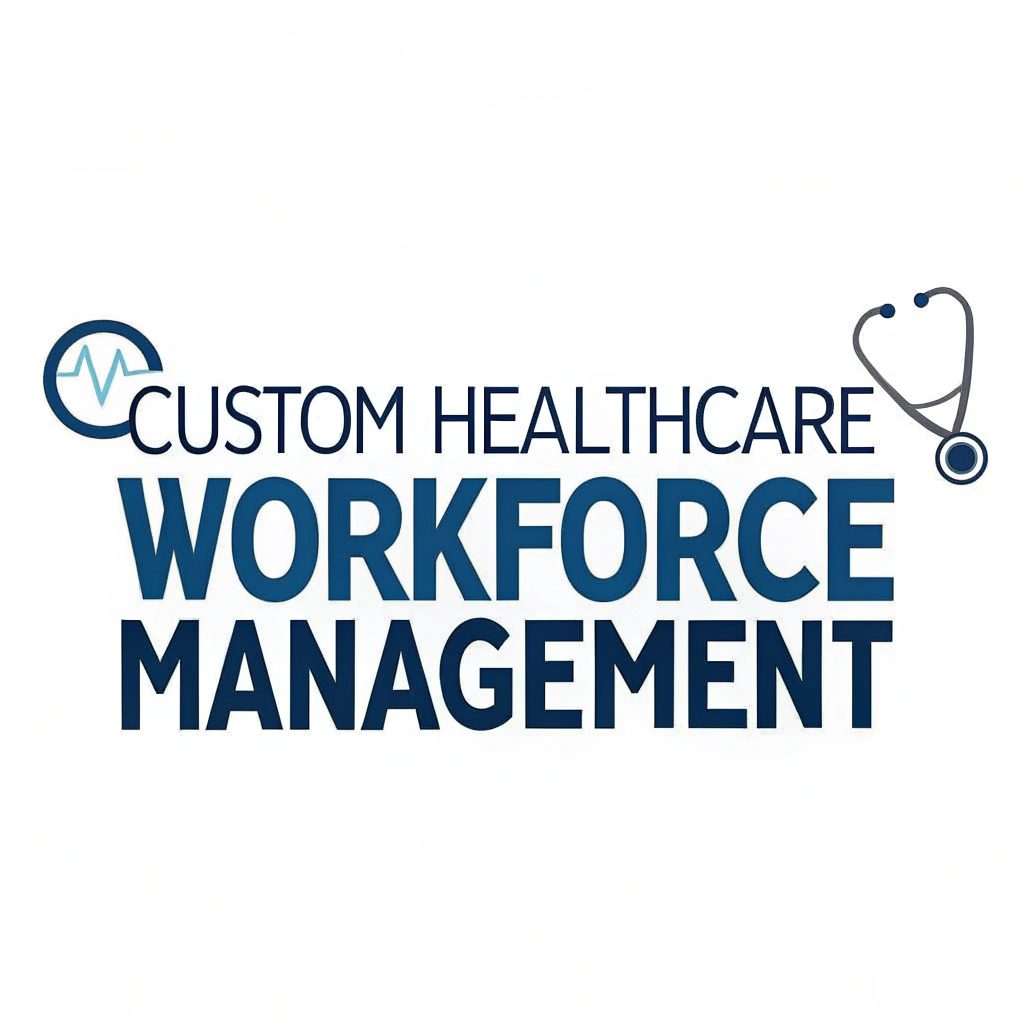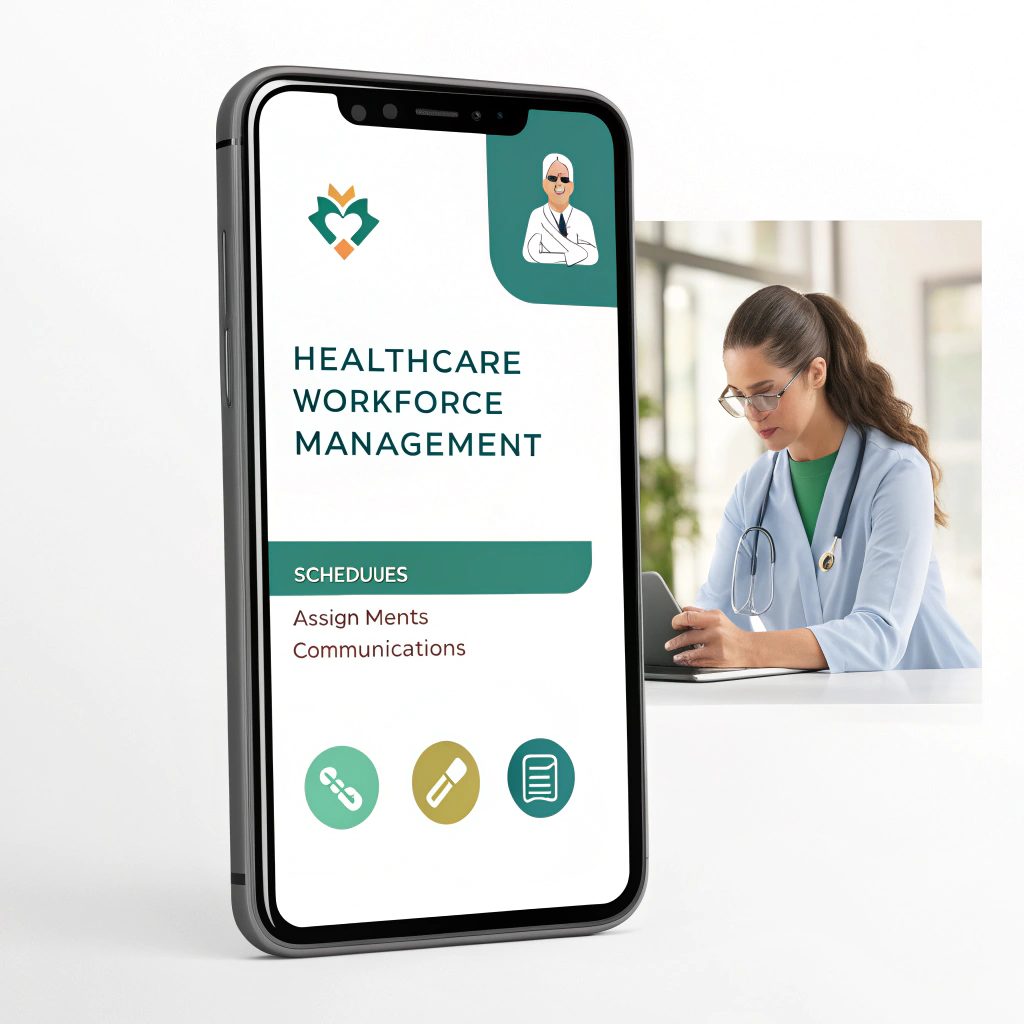
Hospitals, clinics, and large health groups face daily pressure from rising patient demand. They also deal with staff shortages, long hours, and constant schedule changes. Many leaders now look for simple tools that help them manage teams with more control. Custom healthcare workforce management software supports this need with clear, fast, and secure systems.
It helps staff plan shifts, record hours, and update patient tasks without confusion. A study from a major health review in 2025 said that digital scheduling improved staff response times by 33%. Another report shared that automated tools reduced overtime costs by nearly 22%.
Why Healthcare Needs Better Workforce Systems?
Healthcare teams move fast. Every minute matters. Staff handle patients, update charts, and respond to sudden needs. Slow communication or missing staff can delay care and increase stress. Custom workforce software gives leaders a clear view of staff activity. It keeps tasks organized and supports smooth handovers between shifts.
A hospital manager in a 2025 survey said, “We lost too much time on manual planning. Digital tools changed that.” This simple shift improved work quality and reduced burnout across her team.
What Custom Software Brings to Healthcare?

Custom tools fit your own workflow. They follow your rules, not someone else’s. Every hospital or clinic operates differently. A ready-made system may not fit the unique pace or needs of your team. Custom development fills this gap. It brings clear control over daily tasks and protects patient data with strong security.
A research report by Statista said that 70% of health organizations planned to increase spending on digital workforce tools in 2026. Leaders want better visibility and safer data handling. Custom systems give both.
Core Features of Custom Healthcare Workforce Software
Custom systems include tools that match real healthcare challenges. Here are common features built for daily use:
- Shift Planning: Managers set shifts quickly and avoid staff shortages.
- Real-Time Task Tracking: Nurses and staff see updates instantly.
- Secure Data Controls: Access levels protect sensitive patient records.
- Mobile Access: Staff check schedules and updates from their phones.
- Performance Reports: Leaders view workload, staff output, and delay patterns.
In 2025, a hospital network reported that clear digital planning cut missed tasks by 28%. This helped improve patient safety and staff focus.
1. The Value for Decision Makers
Leaders need clear data to guide daily decisions. Custom software offers simple dashboards with real-time details. It also reduces paperwork and repeated tasks. This helps leaders use their time wisely.
Hospitals also deal with complex compliance rules. Custom systems follow these rules and reduce the chance of errors. This lowers risks and protects the organization. A compliance survey in 2025 showed that digital tools reduced reporting mistakes by almost 40%.
2. Strong Security for Sensitive Health Data
Data privacy is a major concern. Patient records must stay protected. Custom systems come with secure login, encryption, and strict access control. These features follow global security standards like HIPAA.
A report from a health security group found that 72% of data breaches came from weak systems. Custom software helps reduce those risks by using updated security methods.
3. Better Staff Satisfaction
Healthcare teams often work long hours. Confusing schedules add stress. Custom tools give staff a clear view of their hours, tasks, and shift updates. This builds trust and reduces surprises.
A nurse from a large clinic said, “My schedule finally makes sense. I feel less stressed now.” This feedback shows how simple digital clarity improves daily life for staff.
A study by SHRM in 2025 found that fair and clear scheduling improved staff morale by 26%.
4. Cost Savings Through Smarter Planning
Custom software cuts wasted time. It also reduces overtime and avoids double-booked shifts. Many hospitals spend large amounts on manual planning. Digital tools change that.
Deloitte reported that healthcare groups using automated planning saved an average of 20% in yearly labor costs. This money can then support new staff, training, or improved patient services.
How Custom Workforce Management Software Development Works?

Custom software follows clear stages to match your needs. Developers study your workflow and build features that fit your environment. Teams test each part before moving forward. This avoids surprises later.
A senior developer once said, “Good software grows from real problems, not guesses.” That simple idea guides the entire process.
Each project includes planning, design, coding, testing, and support. Decision makers stay involved in each step to shape the solution.
Integration with Existing Hospital Systems
Many healthcare groups already use EHR, EMR, or billing software. Custom workforce tools can connect with these systems. This keeps patient data and staff records in one flow. It also reduces duplicate tasks and prevents errors.
BusinessWire reported that integrated systems improved operational accuracy by 29% in 2025. Better links mean faster updates and clearer decisions.
Mobile Tools for Field and Clinic Staff
Many healthcare workers move between units or locations. Mobile access helps them stay updated anywhere. Staff can review their shifts, update patient tasks, or report delays on the go. This helps managers respond faster.
A clinic network said that mobile access improved real-time communication by 35% across three branches.
AI Support for Faster Decisions
AI tools help predict staff shortages and patient demand. They warn managers before problems escalate. This gives leaders time to assign more staff or adjust schedules.
Harvard Business Review in 2025 shared that AI planning can cut wait times by 20%. This supports both patient care and employee well-being.
Problems Without Digital Tools
Hospitals using manual methods face slow updates, missed shifts, and high stress. These issues lead to delays in patient care. Staff often feel confused when schedules change without notice.
A PwC survey found that poor planning systems caused up to 16% lost productivity each year. That loss grows as teams expand.
Long-Term Gains for Healthcare Leaders
Custom systems support long-term growth. They grow with your needs and adapt to new rules. They also provide clear data for planning budgets and improving services.
Leaders gain strong control over staff work, performance patterns, and resource use. This clarity makes daily management easier and safer.
A director from a major health group shared, “The system gave us the order we needed. It changed how we work.”
Final Thoughts
Custom healthcare workforce management software development offers real value for hospitals, clinics, and large health groups. It brings clarity, structure, and speed to daily tasks. It reduces stress for staff and improves decision-making for leaders.
In a time where patient needs grow fast, digital tools help healthcare teams stay organized and responsive. These systems protect data, save time, and support better outcomes. For leaders seeking stable, safe, and efficient operations, custom software is a strong step forward.
FAQs
Can small clinics afford custom workforce software?
Yes, many small clinics choose smaller builds. These versions include core tools only. This keeps the cost low and still matches their workflow.
Does the software help with staff training?
Yes, it can include training modules. Teams can see steps, rules, and short guides. This helps new staff learn tasks faster.
Can the software track contract or part-time staff?
Yes, it can track all roles. It can also set limits for hours, shifts, and duties. Managers get a clear view of every worker type.
Does the system support language options for global teams?
Yes, custom builds can support many languages. This helps teams in different regions work with ease.








